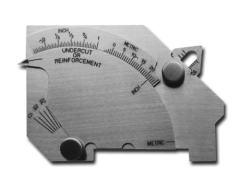Model T Tube-sheet Mounted Reference Electrode by EDI
Description
Cathodic protection applied to a waterbox can cause a non-uniform potential distribution to exist over the face of the tube sheet. These potential gradients cannot be detected by a remotely mounted reference electrode. Excessively electronegative potentials can result in hydrogen damage on titanium and ferritic stainless steel tubes while excessively electropositive potentials mean inadequate protection of the tube sheet. Model T references are the only means to verify that the actual potential at the tube sheet surface is within the acceptable range.
Typical Applications
- Condenser tube sheets
Features
- Ability to place a reference electrode in selected locations on the tube sheet
- In-line underwater connector for easy removal
- CPVC housing rated to 210oF
- All non-metallic double tube plug for attachment
- Patented design: U.S. Patent No. 4,957,616
Electrode Housing
- Gelled Element: 1 1/16" dia. x 3" long gray CPVC housing
- Dry element: 1" dia. x 2 " long gray CPVC housing
Element Types
- AGG: Saturated gelled Ag / AgCl
- CUG: Saturated gelled Cu / CuSO4
- AGD: Dry-type Ag / AgCl
- ZIN: 99.99% zinc
Electrode Termination
- Female underwater connector on 6" (nominal) fully encapsulated lead wire
Lead Wires
- Male underwater connector attached to #22 AWG Teflon insulated lead wires in the following colors: red, orange, yellow, green, blue, purple, brown, black, white, gray.
Temporary Electrode Installation
In a temporary installation, the reference electrode is inserted into the bridge whenever a potential measurement is required. In between readings, the 3/8" pipe plug must be installed in the bridge; at pressures over 50 psi, the 1" end cap must also be used. If the plug and cap are installed without any joint compound or gaskets, the bridge will leak slightly to relieve the pressure buildup. If a leak-free installation is required, use Teflon tape or a non-hardening Teflon pipe dope on the threads.
Whenever the end cap or pipe plug is removed, it should be assumed that the liquid behind it is under pressure. The cap should be slowly loosened to bleed off the pressure; once the leakage has stopped, the cap can be removed. The same procedure must be repeated when removing the plug.

Typical Data
The potential across a tube sheet under cathodic protection can show large variations from one location to another. A smaller variation will also occur with time. Different waterboxes of the same apparent design can produce different potential distributions.
Data from several Model T Reference Electrodes spotted at strategic locations on the tube sheet can be used to construct iso-potential diagrams which clearly show the potential distributions. EDI can construct these diagrams from a customer's data. Experience has shown that iso-potential diagrams constructed from 30-day average data correlate very closely with inspection reports listing tubes with hydrogen damage.

The accuracy of these diagrams depends upon the number of reference electrodes used and their distribution. Six to twelve reference electrodes on each tube sheet will provide sufficient data for constructing an accurate diagram.
Dimensions

Model Designation, Electrode
- Specify as EDI Model TE-XX-SW, where XXX = element type
Model Designation, Wire
- Specify as EDI Model TW-col-LWnnn, where col = color code and nnn = wire length in feet.






